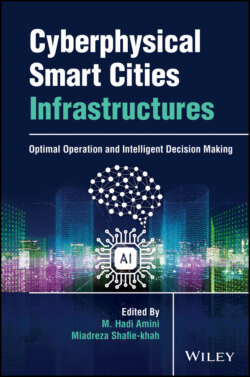Читать книгу Cyberphysical Smart Cities Infrastructures - Группа авторов - Страница 27
2.3.2.3 Deep Learning Process and Challenges
ОглавлениеFeasible smart cities are established by technology‐driven foundations, and their initiatives are on different branches and domains, in which each of them may requires systems with high‐performance computing resources and technologies. Such systems have pros and cons such as saving energy and reducing the air pollution and reducing diagnose time, but writing something bad. One of the most popular technologies used to tackle such huge amounts of data is DL that is a special algorithm within machine learning and is efficiently used to obtain required knowledge from the input data, extracting the patterns that govern the whole data and also classify them. Several research studies are successfully applying DL on smart cities [24], such as urban modeling for smart cities, intelligent infrastructure for smart cities, and smart urban governance. Here, we aim to focus on a particular application of DL that is smart mobility and transportation.
AI definitely pushed all the science a step forward by making the systems and processes of scientific inquiry as smart as possible, for example, autonomous transportation systems [24] in smart mobility. Making a decision about whether the object seen is a human being or not is challenging [45]. Object detection is one of the challenging issues in smart mobility that surely boosts and facilitates automation in transportation systems. Consequently, this positively enhances and improves smart mobility in smart cities. Researchers in [45] explored analysis of decent object detection solutions like DL [46]. The scientists leveraged a well‐known object detection system, namely, YOLO (You Only Look Once), which was developed earlier by Redmon et al. [47] and assessed its performance on real‐time data.
